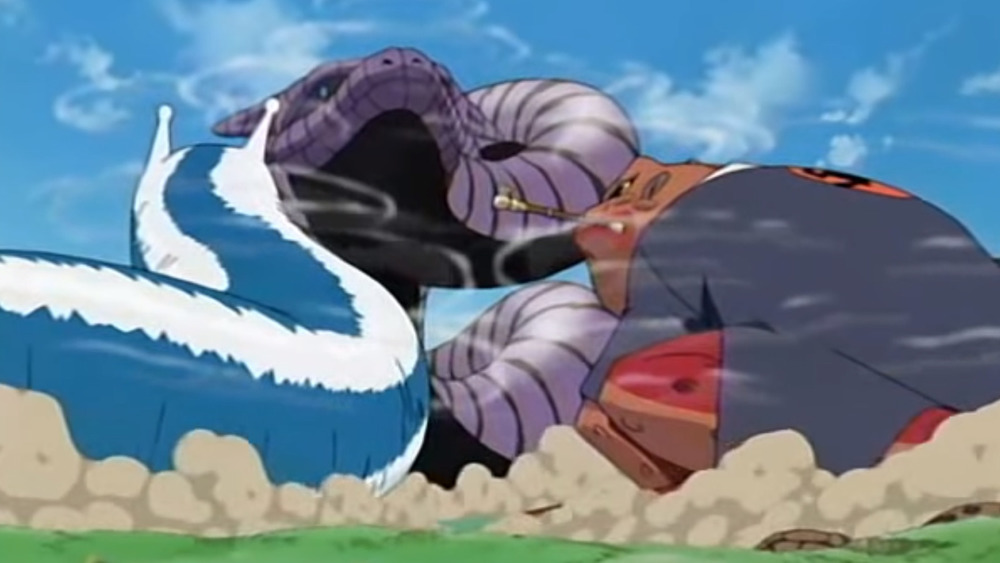The Naruto Characters You Didn't Know Were Inspired By Folktales
Relatively early on in Naruto's now-expansive story, a friendship between Naruto and fellow Team 7 member Sasuke is not only dissolved but ends in a climatic battle between the two former-friends. Shortly after, a legendary ninja named Jiraiya pulls Naruto out of the Konohagakure Academy for personal training. This moment serves as the conclusion of the first discreet part of Naruto's story. When Naruto returns, he and the rest of the series cast are a little over two years older, marking the beginning of the series' Shippuden era.
Jiraiya's mentorship of Naruto serves an important role not just in concluding the first chunk of the series, but as a key contributor to Naruto's lengthy journey toward becoming Hokage. Alongside Jiraiya, fellow key characters Tsunade and Orochimaru together comprise an in-fiction historical group known as the Sannin. Their full Japanese-language title is "densetsu no sannin," meaning simply "the three legendary ninja."
Now, here's where things get interesting: the Sannin are unique among Naruto characters in that they were not entirely original creations of series author Masashi Kishimoto. Rather, the Sannin are based on characters originally conceived in a folktale from the 1800s called Jiraiya Goketsu Monogatari (via the University of Michigan) — roughly translated as "the tale of the heroic Jiraiya." And over the past few centuries, these folktales have been a cultural staple, of which their appearance in Naruto is only one part of.
Jiraiya has appeared throughout centuries of Japanese popular culture
Jiraiya's first appearance as a fictional character can be traced back to 1806, when Jiraiya Goketsu Monogatari first appeared in recorded form. The story could, theoretically, predate its appearance that year as a folktale which was shared orally. Not only did the story feature Jiraiya in his primordial form, but it included the slug magic user Tsunade as his love interest, and the snake magic user Orochimaru as his nemesis too. Their respective animal affinities were, of course, retained in Naruto.
Jiraiya Gōketsu Monogatari then took on its most expansive form beginning in 1839. The story was adapted into a serialized novel and released over the course of the next 29 years across a total of 43 chapters. Soon after that, in 1852, the first 10 chapters of its novelization served as the source material for a kabuki stage play starring Jiraiya. Since then, Jiraiya's story has been the inspiration for films, video games, anime and manga, including many outside of the Naruto franchise. Goketsu Jiraiya, for example, was a silent film released in 1921, resembling a kabuki performance in appearance.
Thus, Jiraiya, Tsunade and Orochimaru's roles in Naruto are not unique to the anime and manga series, but rather. are a continuation of a centuries-long storytelling tradition, spanning multiple genres and medium, in Japanese popular culture.

